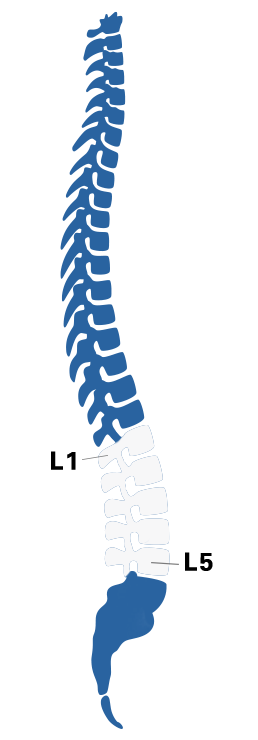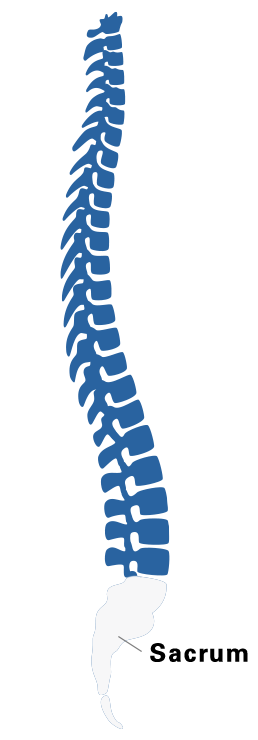The first thing you want to know about an injury is where it’s located on the spinal cord—is it at C-6, T5, L-1? The location, or level, of an injury, lets you know how the injury is likely to effect strength, sensation and bodily functions.
This chart is a quick guide to the cervical, thoracic, lumbar and sacral vertebrae along the spinal cord, and how damage to each area can affect loss of function and control. For more details: Levels of Injury and What They Mean.
ANIMATED SPINAL CORD INJURY CHARTMouse over the spinal column to see how the level of injury affects loss of function and control Return to “What is a Spinal Cord Injury?” |




|
Cervical InjuriesCervical injuries above the C-4 level may require a ventilator for the person to breathe. C-5 injuries often result in shoulder and biceps control, but no control at the wrist or hand. C-6 injuries generally yield wrist control, but no hand function. Individuals with C-7, C-8 and T-1 injuries can straighten their arms, but still may have problems with their hands. |
ANIMATED SPINAL CORD INJURY CHART
Mouse over the spinal column to see how the level of injury affects loss of function and control
Return to “What is a Spinal Cord Injury?”
Cervical Injuries
Cervical injuries above the C-4 level may require a ventilator for the person to breathe. C-5 injuries often result in shoulder and biceps control, but no control at the wrist or hand. C-6 injuries generally yield wrist control, but no hand function. Individuals with C-7, C-8 and T-1 injuries can straighten their arms, but still may have problems with their hands.
Thoracic Injuries
The first thoracic vertebra, T-1, is located approximately at the same level as the top rib. Injuries to nerves in this region usually affect the chest and the legs, and result in paraplegia. For injuries from T-1 to T-8, there is usually control of the hands but lack of abdominal muscle control. (Individuals with injuries from T-1 to T-6 are also at risk for Autonomic Dysreflexia)
Lumbar Injuries
Injuries to nerves in the area of L-1 to L-5 generally result in some loss of functioning of the hips and legs. Bowel, bladder and sexual function may also be impacted.
Sacral Injuries
The sacrum runs from the pelvis to the end of the spinal column. Injuries to nerves in this area generally result in some loss of functioning of the hips, legs, ankles, and feet. Loss of control of bowel and bladder and sexual functions is also common.